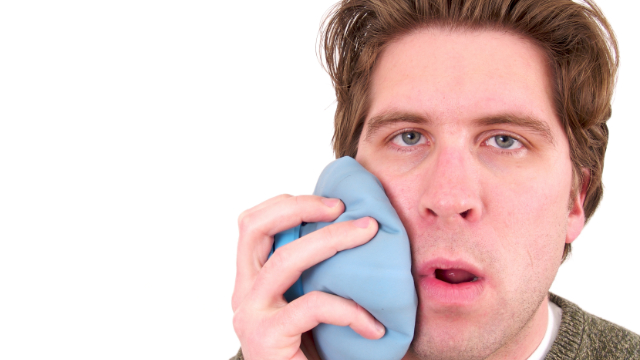
Whether you realize it or not, you use your temporomandibular joint (TMJ) pretty often. This joint connects your lower jaw to the rest of the skull right in front of your ears, and you can actually feel it if you touch right below your temples and open your mouth. The TMJ allows the jaw to move up and down and from side to side, which is why itâs used with practically every movement that involves your mouth. So when you speak, swallow, or bite down on something, you have both of your TMJs to thank.
Unfortunately, the TMJ also has a reputation of being a common location for pain. Temporomandibular disorder (TMD) is a general term used to describe any condition that affects the TMJ. The common trait of all TMDs is pain and possibly inflammation in the muscles of the jaw and surrounding area. This pain can spread to the cheek, ear, or temple, and it often causes difficulty performing any tasks that require opening or closing the mouth. As with many other parts of the body, you might not become acquainted with your TMJ until something goes wrong with it, as is the case with these conditions.
Approximately 5-12% of the population is affected by a TMD, with the majority of these individuals dealing with acute painâmeaning it developed recently. If you count yourself as one of the millions of Americans dealing with a TMD right now, you may be curious if there are any simple solutions out there that will help to alleviate your symptoms. The good news is yes, there are. Most cases of acute pain from a TMD can be effectively treated with some home remedies that you can perform on your own. We recommend the following tips for a recent onset of pain or other symptoms to the TMJ:
- Heat therapy: applying heat with a moist warm towel or dry heating pad can reduce jaw pain and stiffness by increasing the flow of blood to the area; itâs recommended that you use a warm compress and place it on the jaw and temples for about 10-15 minutes, about twice a day; heat therapy is particularly effective if you have a dull, steady, aching pain
- Ice therapy: if the heat does not lead to any notable improvements after two days, try applying ice instead; the application of ice will numb the nerves and dull the pain by slowing down the flow of blood to the area; apply an icepack wrapped in a towel to the area for about 15-20 minutes a few times a day
- Massage: massaging the areas around your jaws can also improve blood flow and provide relief; this can be accomplished by opening your mouth and locating the muscles next to your ears by the TMJ; put your fingers on any area thatâs sore and apply gentle pressure in a circular motion; you can also massage the muscles on the sides of your neck if there is tension in that region as well
- Jaw exercises: regularly moving the jaw in a specific and systematic manner may be helpful for further reducing TMD symptoms; a selection of exercises is below
- Relaxed jaw exercise: rest your tongue gently on the top of your mouth behind your upper front teeth; allow your teeth to come apart while relaxing your jaw muscles
- Chin tucks: with your shoulders back and chest up, pull your chin straight back, creating a âdouble chin;â hold for three seconds and repeat 10 times
- Resisted opening of the mouth: place your thumb under your chin; open your mouth slowly, pushing gently against your chin for resistance; hold for three to six seconds, and then close your mouth slowly
- Resisted closing of the mouth: squeeze your chin with your index and thumb with one hand; close your mouth as you place gently pressure on your chin; this will help strengthen your muscles that help you chew
- Pain-relieving medications: non-steroidal anti-inflammatory drugs (NSAIDs) like ibuprofen and other over-the-counter pain medications may help to reduce inflammation and alleviate pain in some individuals
- Splint or night guard: these devices fit over your upper and lower teeth to prevent these rows from touching one another; in effect, this will lessen the impact of clenching or grinding the teeth and correct your bite by putting your teeth in a better position
